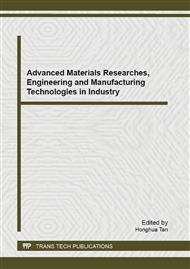p.250
p.256
p.262
p.269
p.274
p.281
p.286
p.291
p.296
A Comprehensive Research to Find Suitable Acid for Sandstone Acidizing
Abstract:
Stimulation of sandstone formations is a challenging task, which involves several chemicals and physical interactions of the acid with the formation. Some of these reactions may result in formation damage. Matrix acidizing may also be used to increase formation permeability in undamaged wells. Mud acid has been successfully used to stimulate sandstone reservoirs for a number of years. It is a mixture of hydrofluoric (HF) and hydrochloric (HCl) acids designed to dissolve clays and siliceous fines accumulated in the near-wellbore region. For any acidizing process, the selection of acid (Formulation and Concentration) and the design (Pre-flush, Main Acid, After-flush) is very important. Different researchers are using different combinations of acids with different concentrations to get the best results for acidization. Mainly the common practice is combination of Hydrochloric Acid and Hydrofluoric Acid with Concentration (3% HF 12% HCl). This paper presents the results of a laboratory investigation of orthophosphoric acid instead of hydrochloric acid in one combination and the second combination is fluoboric and formic acid and the third one is formic and hydrofluoric acid on undamaged low permeable sandstone formation. The results are compared with the mud acid and the results analyzed are permeability, color change and FESEM Analysis. All of these new combinations show that these have the potential to be used as acidizing acids in sandstone formations.
Info:
Periodical:
Pages:
274-280
Citation:
Online since:
September 2013
Authors:
Keywords:
Price:
Сopyright:
© 2013 Trans Tech Publications Ltd. All Rights Reserved
Share:
Citation:


